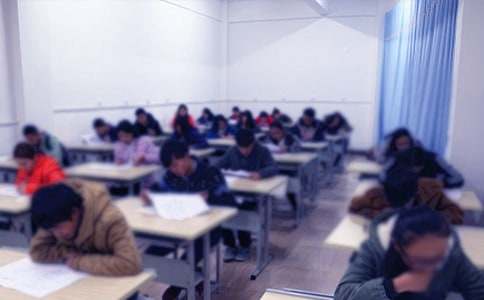職稱英語考試《衛生類》答案
In 1959 the average American family paid $989 for a year’s supply of food. In 1972 the family paid $1,311. That was a price increase of nearly one-third. Every family has had this s?ort of experience. Everyone agrees that the cost of feeding a family has risen sharply. But there is less agreement when reasons for the rise are being discussed. Who is really responsible?

Many blame the farmers who produce the vegetables, fruit, meat, eggs, and cheese that stores offer for sale. According to the U.S. Department of Agriculture, the farmer’s share of the $1,311 spent by the family in 1972 was $521. This was 31 per cent more than the farmer had received in 1959.
But farmers claim that this increase was very small compared to the increase in their cost of living. Farmers tend to blame others for the sharp rise in food prices. They particularly blame those who process the farm products after the products leave the farm. These include truck drivers, meat packers, manufacturers of packages and other food containers, and the owners of stores where food is sold. They are among the “middlemen” who stand between the farmer and the people who buy and eat the food. Are middlemen the ones to blame for rising food prices?
Of the $1,311 family food bill in 1972, middlemen received $790, which was 33 per cent more than they had received in 1959. It appears that the middlemen’s profit has increased more than farmer’s. But some economists claim that the middleman’s actual profit was very low. According to economists at the First National City Bank, the profit for meat packers and food stores amounted to less than one per cent. During the same period all others manufacturers were making a profit of more than 5 per cent. By comparison with other members of the economic system both farmers and middlemen have profited surprisingly little from the rise in food prices.
Who then is actually responsible for the size of the bill a housewife must pay before she carries the food home from the store? The economists at First National City Bank have an answer to give housewives, but many people will not like it. These economists blame the housewife herself for the jump in food prices. They say that food costs more now because women don’t want to spend much time in the kitchen. Women prefer to buy food which has already been prepared before it reaches the market.
Vegetables and chicken cost more when they have been cut into pieces by someone other than the one who buys it. A family should expect to pay more when several “TV dinners” are taken home from the store. These are fully cooked meals, consisting of meat, vegetables, and sometimes desert, all arranged on a metal dish. The dish is put into the oven and heated while the housewife is doing something else. Such a convenience costs money. Thus, as economists point out: “Some of the basic reasons for widening food price spreads are easily traceable to the increasing use of convenience foods, which transfer much of the time and work of meal preparation from the kitchen to the food processor’s plant.”
Economists remind us that many modern housewives have jobs outside the home. They earn money that helps to pay the family food bills. The housewife naturally has less time and energy for cooking after a day’s work. She wants to buy many kinds of food that can be put on her family’s table easily and quickly. “If the housewife wants all of these,” the economists say, “that is her privilege, but she must be prepared to pay for the services of those who make her work easier.”
It appears that the answer to the question of rising prices is not a simple one. Producers, consumers, and middlemen all share the responsibility for the sharp rise in food costs.
練習:
1. Paragraph 3_________________
2. Paragraph 4_________________
3. Paragraph 5_________________
4. Paragraph 6_________________
A The Cost of Convenience.
B A Surprising Answer Given by the Economists.
C The Effect of Inflation D Middlemen’s Limited Share in the Additional Profit.
E Farmers’ Denial of Increased Profit.
F Housewives’ Need to Find Jobs.
5.Many people agree that food prices have increased sharply but they have failed _____.
6.The farmers have not been benefited very much__________.
7.Housewives have to pay for the time they save_____________.
8.The economists have come to the conclusion that the cause of increased food prices lies in ____________.
A Nor have the middlemen.
B to increase the prices for food.
C that they cannot agree on the causes of the increase in prices to agree on the reasons for the increase.
E by buying prepared food.
F the popularization of convenience food.
答案:E D B A D A E F
【職稱英語考試《衛生類》答案】相關文章:
《衛生類》職稱英語考試11-11
職稱英語考試《衛生類》例題11-11
職稱英語考試衛生類固定搭配12-07
概括大意衛生類職稱英語考試10-13
職稱英語考試衛生類閱讀判斷題目及答案10-11
職稱英語考試衛生類固定搭配整理12-03
職稱英語考試關于衛生類閱讀的判斷09-23